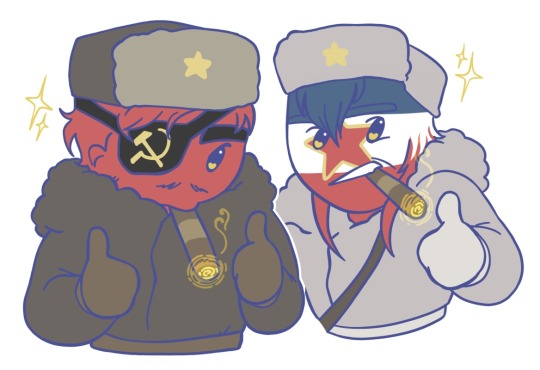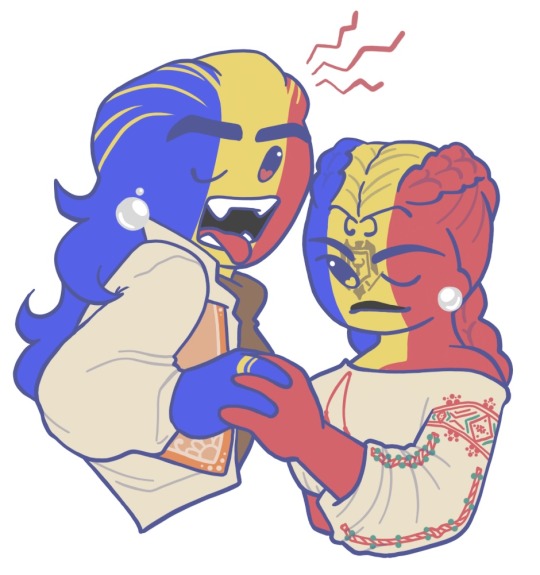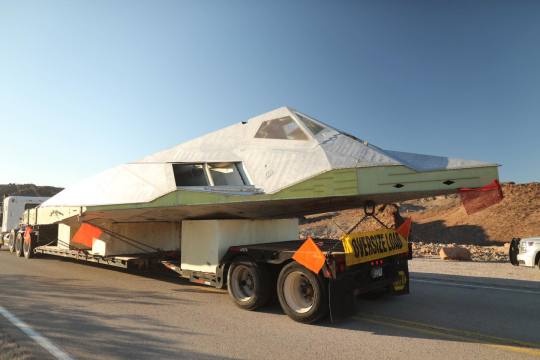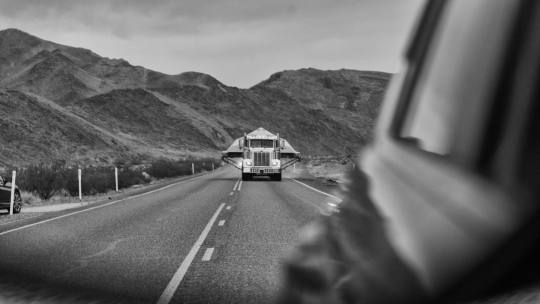#Yugoslavia ch
Explore tagged Tumblr posts
Text

#shitpost#countryhumans#Yugoslavia ch#Nigeria ch#i need to think about them more ..#our art#☢️ ;; posad#🎖️;; tito
5 notes
·
View notes
Text

here’s a really quick doodle based on last post
#countryhumans#ch yugoslavia#design subject to change since this was pretty quick#trying to find a reference for the uniform was surprisingly hard and I think I still didn’t quite get it lol
17 notes
·
View notes
Text


Smokers & Vampires
#kingok art#countryhumans#ch#countryhumans ussr#countryhumans yugoslavia#countryhumans romania#countryhumans moldova
53 notes
·
View notes
Text
Help the poll I just posted has a ship I dislike and blocked the tag of so my own poll is behind a filter screen for me 💀💀💀
#diary#i didnt rlly add china only ships like yugoslavia/china which is only popular#in the CH chinese fandom yk#but i did add pakichu even tho that is also only popular with chinese CH fams#*fans
6 notes
·
View notes
Text
And thus 2024 comes to an end
2024 Art summary

Chs depicted:
Masterpiece of the year: Austria-Hungary
January: Great Moravia
February: Belgium
March: Mykonos
April: Finland
May: Constantinople
June: Republic of Venice
July: Yugoslavia
August: Uruguay
September: Brazil
October: Greece
November: Cyprus
December: Alexandreia, Egypt
#countryhumans#art#artists on tumblr#digital art#traditional art#artwork summary#countryhumans austria#countryhumans brazil#countryhumans yugoslavia#countryhumans greece#countryhumans finland#countryhumans belgium#countryhumans uruguay
13 notes
·
View notes
Note
as I noticed you drew soviet, is he your fav ch?
or if it is someone else, then who?
also what's ur fav ship? :3
Thanks for asking)
Yes, I like Soviet, he is my favourite character.
Besides I like other socialist countries, post soviet countries and southern Europe countries.
My favourite ship is USSR/Yugoslavia.
2 notes
·
View notes
Text
Events 2.4 (after 1950)
1961 – The Angolan War of Independence and the greater Portuguese Colonial War begin. 1966 – All Nippon Airways Flight 60 plunges into Tokyo Bay, killing 133. 1967 – Lunar Orbiter program: Lunar Orbiter 3 lifts off from Cape Canaveral's Launch Complex 13 on its mission to identify possible landing sites for the Surveyor and Apollo spacecraft. 1974 – The Symbionese Liberation Army kidnaps Patty Hearst in Berkeley, California. 1974 – M62 coach bombing: The Provisional Irish Republican Army (IRA) explodes a bomb on a bus carrying off-duty British Armed Forces personnel in Yorkshire, England. Nine soldiers and three civilians are killed. 1975 – Haicheng earthquake (magnitude 7.3 on the Richter scale) occurs in Haicheng, Liaoning, China. 1976 – In Guatemala and Honduras an earthquake kills more than 22,000. 1977 – A Chicago Transit Authority elevated train rear-ends another and derails, killing 11 and injuring 180, the worst accident in the agency's history. 1992 – A coup d'état is led by Hugo Chávez against Venezuelan President Carlos Andrés Pérez. 1997 – En route to Lebanon, two Israeli Sikorsky CH-53 troop-transport helicopters collide in mid-air over northern Galilee, Israel, killing 73. 1997 – The Bojnurd earthquake measuring Mw 6.5 strikes Iran. With a Mercalli intensity of VIII, it kills at least 88 and damages 173 villages. 1998 – The 5.9 Mw Afghanistan earthquake shakes the Takhar Province with a maximum Mercalli intensity of VII (Very strong). With 2,323 killed, and 818 injured, damage is considered extreme. 1999 – Unarmed West African immigrant Amadou Diallo is shot 41 times by four plainclothes New York City police officers on an unrelated stake-out, inflaming race relations in the city. 2000 – The World Summit Against Cancer for the New Millennium, Charter of Paris is signed by the President of France, Jacques Chirac and the Director General of UNESCO, Koichiro Matsuura, initiating World Cancer Day which is held on February 4 every year. 2003 – The Federal Republic of Yugoslavia adopts a new constitution, becoming a loose confederacy between Montenegro and Serbia. 2004 – Facebook, a mainstream online social networking site, is founded by Mark Zuckerberg and Eduardo Saverin. 2008 – Civic mobilizations in Colombia against FARC, under the name A million voices against the FARC. 2015 – TransAsia Airways Flight 235, with 58 people on board, en route from the Taiwanese capital Taipei to Kinmen, crashes into the Keelung River just after takeoff, killing 43 people. 2020 – The COVID-19 pandemic causes all casinos in Macau to be closed down for 15 days.
0 notes
Photo

USSR and his bitch
#my artwork#my art#digital art#artists on tumblr#artist on tumblr#ch yugoslavia#ch ussr#countryhumans ussr#countryhumans yugoslavia#countryhumans#countryhumans fanart#fanart#ship art#shipping art#yugoslavia x ussr
16 notes
·
View notes
Note
I just read ur hc that Yugoslavia cheated on Czechoslovakia after “believing he was dead”, do you mind saying who he cheated on him with?
Romania— and Romania has no clue Yugoslavia was even married before so he felt absolutely horrible when he found out
14 notes
·
View notes
Note
Oh what about Czechoslovakia x Yugoslavia
Very interesting!
Now correct me if I’m wrong any of this but I’m pretty sure the two are pretty good allies with each other. So it could work.
Now these countries were occupied by the USSR and I say that any country that had Soviet occupation were sibling-like and or acted like siblings. However if you take that out of the picture then it could work.
Thank you for the question and please, send me more!
#my post#countryhuman#countryhumans#ch#ch ships#ch ship#countryhuman ships#countryhuman ship#countryhumans ships#countryhumans ship#countryhumans czechoslovakia#countryhumans yugoslavia#ask
5 notes
·
View notes
Text


5 notes
·
View notes
Text
Happy holiday to everyone who's celebrating today!
In Slovenia, it's Reformation Day. A lot of other countries dedicate this day to Martin Luther and the beginning of the Reformation Movement. While that's also the case here, there's an even more significant aspect to it.
It also marks the birth of the Slovene literary language and national identity.
"In line with demands that religious books should be in a language that the people understand, the Slovenian Reformation Movement produced the first books in the Slovenian language.
The first one, Cathecism (Katekizem), was written by the Protestant priest Primož Trubar (1508-1586) in 1550, followed the same year by his second book Abecedarium (Abedecnik).
The two books, and subsequent books by other Protestant writers, are seen as the foundations of the Slovenian language but also of Slovenian culture and national identity coming several centuries before the idea of Slovenian nationhood was first articulated." [Source]
The Slovene people struggled to maintain their culture thorough centuries of oppression.
For most of our history, our language was suppressed and its use periodically even forbidden.
Keep reading if you're interested in a (very short) summary of the history of the Slovene language.
The first written sample of the Slovenian language (also first among Slavic languages) are the Freising manuscripts (Brižinski spomeniki), which date back to around 1000 AD. That makes Slovene the oldest written Slavic language.
From the high Middle Ages up to the dissolution of the Austro-Hungarian Empire in 1918, in the territory of present-day Slovenia, German was established as the language of the elite, while Slovene was considered a vernacular language of the peasantry. It wasn't deemed appropriate for use in churches, schools nor any other areas of public life.
Between 1923 and 1943, all public use of Slovene in its western territories, which were forced to submit to a violent policy of Fascist Italianization, was strictly prohibited, and Slovene-language activists were persecuted by the state.
After the Anschluss of 1938, the use of Slovene was strictly forbidden in a region called Carinthia (now an Austrian state). According to the Austro-Hungarian census of 1910, around 21% of inhabitants of Carinthia spoke Slovene in their daily communication; by 1951, this figure dropped to less than 10%, and by 2001 to a mere 2.8%.
During WWII, Slovenia was divided among the Axis Powers. Each of the occupying powers tried to either discourage or entirely suppress Slovene.
After the war, Slovenia became part of the Socialist Federal Republic of Yugoslavia and Slovene became of the official languages of the federation. Finally, it was used in almost all areas of public life, which continued as Slovenia became independent in 1991.
Now the Slovenian language is spoken by about 2,5 million speakers and is one of the official languages of the European Union.
Some fun facts:
- The Slovene alphabet uses 3 special letters:
Č – reads: CH (as in CHocolate)
Š – reads: SH (as in CaSH)
Ž – reads: J without D (Garage - the end sound)
- All nouns are either masculine, feminine or neuter gender. (Which you have to memorize! There are some rules but all with a bunch of exceptions.)
- Slovene is the only official Language of European Union that uses dual – a grammatical number that some languages use in addition to singular and plural. It's used when referring to precisely two persons, object or concepts.
- On account of only 2.5 million people speaking the language, the 46 dialects of Slovenian language, often classifies Slovene as the most diverse Slavic language. (This also makes it a pain in the ass to learn, as you might find that two tiny villages a 20 min drive apart speak significantly different dialects and nobody ever uses proper literary Slovene when speaking.) There's even a proverb "Vsaka vas ima svoj glas", meaning "every village has its own voice".
- The Slovenian language lacks proper vulgar curse words. We barely use traditional Slovene curse words because it sounds more silly than offensive. Perhaps the most popular curses in the Slovene language are “Tristo kosmatih medvedov” (Three hundred hairy bears), ”Naj te koklja brcne!“ (A hen should kick you!), and ”Krščen matiček! ” (Baptised Matthew!). That's why when we want to curse, we usually borrow words and phrases from our former Yugoslavian tovariši.
61 notes
·
View notes
Text

Smart thoughts
#kingok art#countryhumans#ch#ussr#soviet union#yugoslavia#countryhumans soviet union#countryhumans ussr#countryhumans yugoslavia
56 notes
·
View notes
Note
I realized I've never done the "D as in dog" clarification in spanish before, and last night my brain opted for "D como daño", which probably says something about me... Anyways, do you know what these are called, and what the "standard" ones are in spanish?
So I don't think there's a standard one in Spanish. There are multiple answers you could give, but many use proper names or names of cities.
As far as I know this is called el alfabeto por palabras "alphabet by words" or el abecedario telefónico "telephone alphabet"; and it's different in different places
Even in English I hear different ones, except I usually hear "B as in boy", "V as in Victor", "Z as in Zebra", "M as in Mary", "N as in Nancy", etc etc I know that's not in order, don't at me but for the other words it's kind of up in the air
-
Ones that I've heard or seen - often based on cities or countries!
(PLEASE KNOW THIS IS NOT STANDARDIZED I DON'T THINK A STANDARD VERSION EXISTS IN SPANISH?)
A de Alicante / A de Antonio / A de Argentina / A de Alemania [Germany]
Be de Barcelona
C de Colombia / C de Cádiz
D de Dinamarca [Denmark]
E de España [Spain]
F de Francia [France]
G de Guatemala / G de Granada
H de Historia [history] / H de Hada [fairy] / H de Hambre [hunger]
I de India / I de Inés / I de Italia [Italy]
J de Jos�� / J de Jerusalén [Jerusalem] / J de Japón [Japan]
K de Kilo
L de Lorenzo
M de Madrid / M de Marco / M de México
N de Navarra / N de Nicaragua
Ñ de Ñoño [wimp] / Ñ de Ñu [wildebeest]
O de Oviedo / O de Oso [bear]
P de París / P de Portugal / P de Perú
Q de Queso [cheese]
R de Roma [Rome]
S de Sábado [Saturday] / S de Sevilla
T de Toledo / T de Tomás
U de Uruguay
V de Valencia / V de Victoria [victory, or the name] / V de Venezuela
W de Washington
X de Xilófono [xylophone]
Y de Yugoslavia
Z de Zorro [fox] / Z de Zaragoza
And I'm not sure if I've heard the one for LL. It was always doble ele or ele doble. I personally would probably say LL de lluvia but it does make sense when you're spelling something to say two Ls
Oh, also CH is not its own letter now, but I believe I was taught CH de chocolate or CH de Chile
Please know that my experiences are based primarily on European Spanish, so I'm not sure what they might say in other countries
Also I'm just assuming y'all know how to pronounce the letters in the alphabet which you might not so I would recommend looking up the alphabet in Spanish on youtube and hearing someone pronounce the letters
Also RR is called doble ere usually, it's typically said or written like that. RR never begins a word so it's always considered a special case and doesn't have its own letter in that kind of alphabet. I think I was taught RR de carro (?) but told it’s not its own letter exactly(?)
-
Also there's B and V which have different names depending on where you are. B and V have a similar sound when pronounced in Spanish in many words, so there are
You might hear B alta/larga or V baja/corta/chica where it's "big/long B" and "short/small V"
We were also taught B de burro "B as in donkey", and V de vaca "V as in cow"
Btw when I was in school our teacher gave us flashcards that had the letters and some things that were definitely for little kids but it was something like:
A de árbol [tree]
B de burro [donkey]
C de casa [house]
CH de chocolate
D de dedo [finger]
E de elefante [elephant]
F de flor [flower]
G de gato [cat]
H de hielo [ice] / H de hamburguesa [hamburger]
I latina / I de iglesia [church]
J de jirafa [giraffe] / J de José
K de kiwi
L de león [lion]
LL de lluvia [rain]
M de mariposa [butterfly]
N de naranja [orange]
Ñ de ñu [wildebeest] / Ñ de ñandú [idk how to describe it, it looks like an ostrich but it's not an ostrich exactly? It's called a "rhea" in English]
O de oveja [sheep]
P de princesa [princess]
Q de queso [cheese]
R de rana [frog]
S de serpiente [snake]
T de tomate [tomato]
U de uva [grape]
V de vaca [cow]
W de Washington
X de xilófono [xylophone]
Y de yoyo
Z de zapato [shoe]
And you know it's old when CH is still included because CH and LL haven't been considered their own letters since 2010. I still think they're important, but they're not considered letters in and of themselves
-
The other ones that you might hear are i latina and y griega which I included above. Literally this is "Latin I" and "Greek Y" because i and y have the same sound when pronounced in the alphabet like that, and Y is said to be Greek while I comes from the Latin letters
Occasionally though you will see la Y pronounced as la ye
And finally, LL is sometimes included in alphabets and sometimes not. In the abecedario it's typically la elle which is pronounced with the LL sound; but you might also see ele doble which is "double L"
-
If anyone has any other examples or things they were taught, please let me know! I'd be curious to see if there are any differences
64 notes
·
View notes
Text

VIDEO: F-117 "Dark Angel" goes by highway to museum in Arizona
Fernando Valduga By Fernando Valduga 11/15/22 - 17:46 in Military, Museums
Departing from the Tonopah Test Range in Nevada on Sunday (13/11), an F-117A was transported by truck through Arizona highways to the Pima Air & Space Museum in Tucson.
youtube


The trip took two days and arrived today at the museum in Pima, where it has already been removed from the truck and already rests on its landing gear. The entire process was recorded by the Boneyard Safari team.
The Lockheed F-117A Nighthawk in particular (USAF 84-0810), named "Dark Angel" is joining the museum's collection and lined up for restoration to soon be on public exhibition.


Stealth with the paint removed slowly crossed the state. The F-117 called Dark Angel flew in the first Gulf War and also over the former Yugoslavia in 1999.

The F-117A Night Hawk "Dark Angel" aircraft made its first flight on January 18, 1985 and flew 26 missions with the 416th TFS and then an undisclosed number of operational missions with the 9th FS.

Photos: Boneyard Safari
Tags: Military AviationLockheed F-117A NighthawkMuseumsUSAF - United States Air Force / US Air Force
Previous news
Boeing delivers the 20th and last CH-47F Chinook to the Royal Air Force of the Netherlands
Next news
Russia inaugurates new airfield in Antarctica
Fernando Valduga
Fernando Valduga
Aviation photographer and pilot since 1992, he has participated in several events and air operations, such as Cruzex, AirVenture, Dayton Airshow and FIDAE. It has works published in specialized aviation magazines in Brazil and abroad. Uses Canon equipment during his photographic work in the world of aviation.
Related news
ARMAMENTS
Norway confirms purchase of $500 million AMRAAM missiles for F-35 fleet
16/11/2022 - 14:00
HELICOPTERS
VIDEO: Sikorsky and DARPA successfully conduct autonomous rescue operation using Black Hawk without pilot
16/11/2022 - 12:00
MILITARY
Russian missiles fall in Poland killing at least two civilians
16/11/2022 - 08:32
The Netherlands is one of the eight NATO countries that operate Chinook.
HELICOPTERS
Boeing delivers the 20th and last CH-47F Chinook to the Royal Air Force of the Netherlands
15/11/2022 - 16:00
Premium Aerotec completed and delivered the first central part of the hull to a Eurofighter of the Quadriga contract. (Photo: Premium AEROTEC/Jost G. Thorau)
MILITARY
First centerpiece of the fuselage delivered to the "Quadriga" Eurofighter
15/11/2022 - 14:00
MILITARY
IMAGES: Airbus retires its oldest A400M
15/11/2022 - 12:22
home Main Page Editorials INFORMATION events Cooperate Specialities advertise about
Cavok Brazil - Digital Tchê Web Creation
Commercial
Executive
Helicopters
HISTORY
Military
Brazilian Air Force
Space
Specialities
Cavok Brazil - Digital Tchê Web Creation
9 notes
·
View notes
Text
I wamt more CH SERBIW CONTENT!!!!!!!!!! THERE IS NO CH SERBIA OR CH YUGOSLAVIA CONTENT SND IM SO PISSED ABOUT THID

LOOK AT HIM
Look at HIM HOW COULD YOU NOT LIKE HIM

OR HER
Balkan content WHEN
2 notes
·
View notes